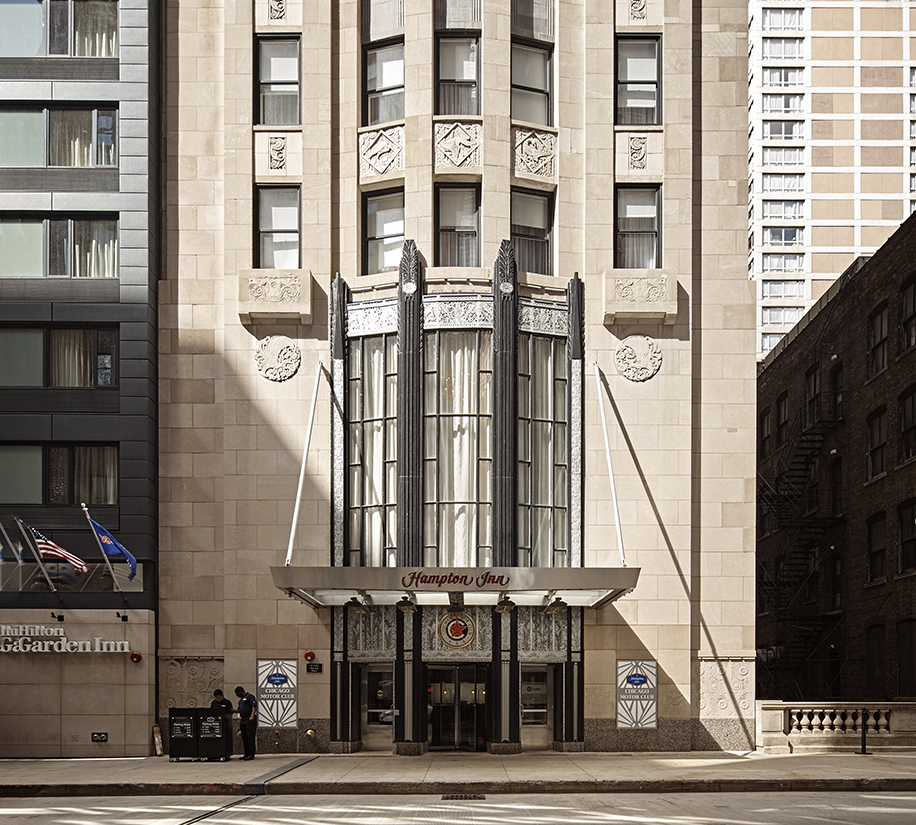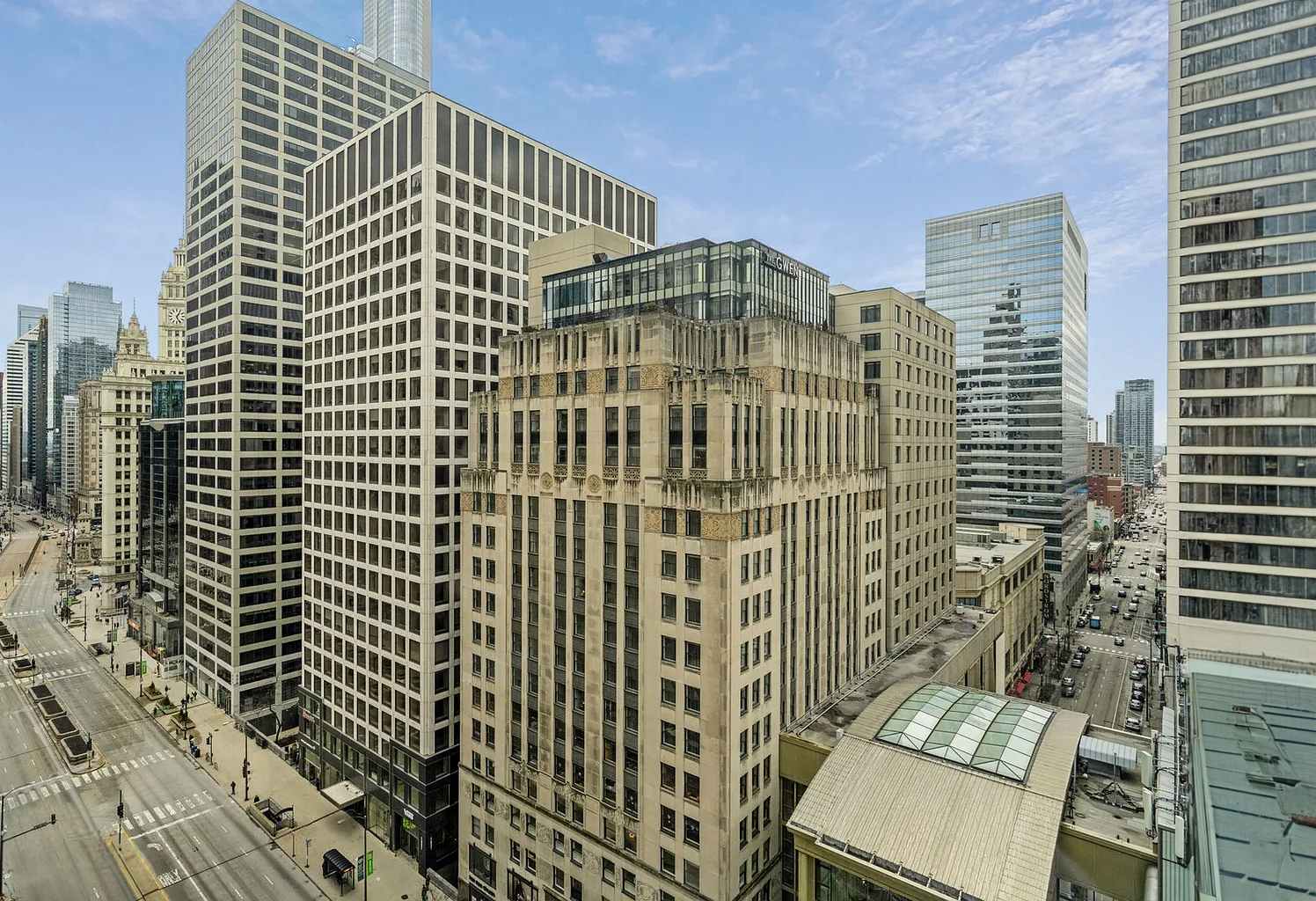The Century Tower is an Art-deco skyscraper designed by Thielbar & Fugard, and built between 1929 and 1930 in Chicago, IL.
Century Tower is not the only name you might know this building by though. It is common for companies to want to attach their names to iconic buildings when they move in, or for the general public to come up with nicknames, and this one is no exception. The Century Tower is also known, or has been known as, Trustees System Service Building, Corn Products Building, Skyline Century of Progress, The Lake and Wells Building, or The 201 Towers.
Its precise street address is 182 West Lake Street, Chicago, IL. You can also find it on the map here.
The Century Tower is a structure of significant importance both for the city of Chicago and the United States as a nation. The building embodies the distinctive characteristic features of the time in which it was built and the Art Deco style. Because of that, the Century Tower was officially declared as a national landmark on January 9th 2003.
The building underwent a major restoration in 2005.








